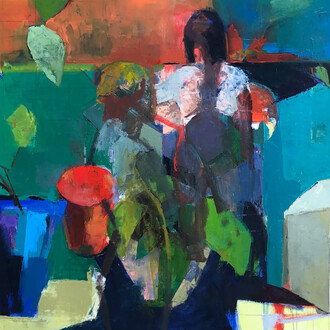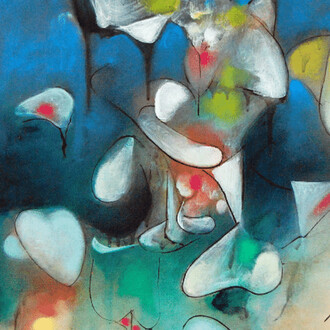This fall, SAMA will host the first retrospective exhibition of the influential Chicana artist and cultural critic Amalia Mesa-Bains, who pioneered the genre of altar-installation. Presenting work from the entirety of her career for the first time, Amalia Mesa-Bains: Archaeology of memory features over forty works in a wide range of media and celebrates Mesa-Bains’s important contributions to the field of contemporary art.
For over forty-five years, Mesa-Bains has innovated sacred forms such as altares (home altars), ofrendas (offerings to the dead), descansos (roadside resting places), and capillas (home yard shrines) to recover cultural memory and position Chicana art into the broader field of contemporary American art.
Her major series of four multimedia installations, titled Venus Envy, spans varied cultures and historical periods to celebrate and reframe the narratives of heroic, archetypal, mythic, and ancestral women including Cihuateotl (“Divine woman” in Mixtec (Aztec) tradition), the Virgin of Guadalupe, and the artist’s grandmother, Mariana Escobedo Mesa. Armoires, libraries, laboratories, gardens, and landscapes become sites for Mesa-Bains to examine the construction of spaces and the cultural memories embedded in them, exploring themes such as life, death, family, migration, womanhood, healing, and resiliency.
The exhibition is curated by María Esther Fernández, Artistic Director, the Cheech Marin Center for Chicano Art & Culture of the Riverside Art Museum, and Laura E. Pérez, Professor of Chicanx, Latinx and Ethnic Studies and Chair of Latinx Research Center, UC Berkeley, and is accompanied by a fully illustrated catalogue.
Amalia Mesa-Bains: Archaeology of memory is organized by the Berkeley Art Museum and Pacific Film Archive in collaboration with the Latinx Research Center (LRC) at UC Berkeley. The exhibition is made possible by generous lead support from the Henry Luce Foundation and The Andy Warhol Foundation for the Visual Arts.
In San Antonio, Amalia Mesa-Bains: Archaeology of memory is generously supported by The Brown Foundation. Additional funding comes from the John R. and Greli N. Less Charitable Trust, the Marcia and Otto Koehler Foundation, and Chave and Bill Gonzaba. The Museum is thankful to all SAMA members for their support of the exhibition.














